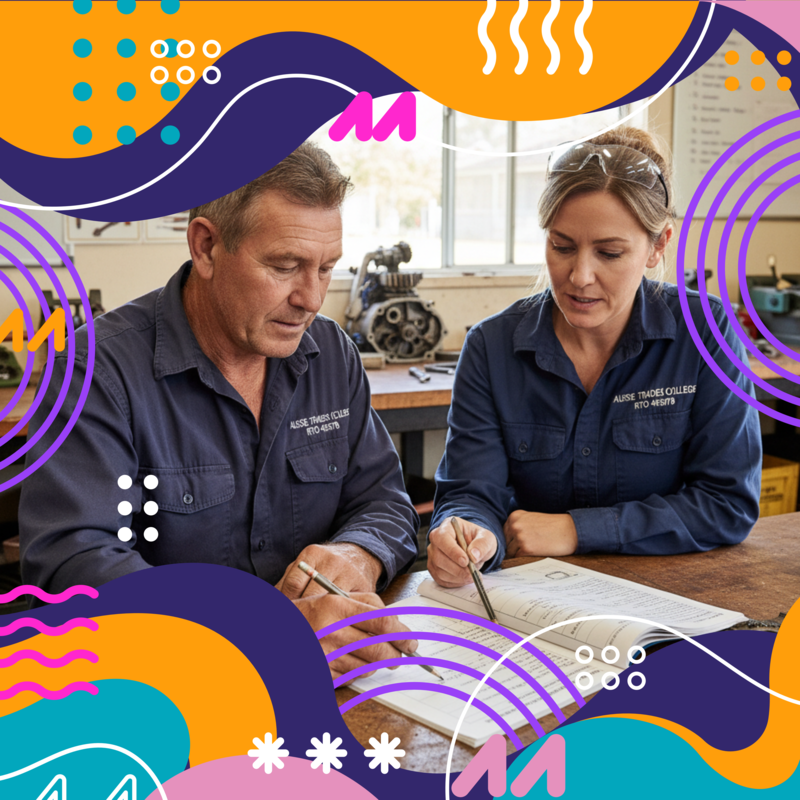Adult Literacy and Numeracy Toolkit
A comprehensive new resource, the Adult Literacy and Numeracy Tutor Manual has been made available, offering a significant and positive tool for trainers and assessors in Registered Training Organisations (RTOs).
Developed through a two-year collaboration between Libraries Tasmania, TasTAFE, and 26Ten, the manual fills a gap in the adult literacy sector.
It provides RTO trainers with a contemporary, evidence-based guide that not only outlines effective teaching strategies but also explains the research and science behind them.
The manual serves as both a professional development tool and a practical, day-to-day guide.

A Three-Part Guide
The manual is thoughtfully structured into three downloadable parts, allowing trainers to access the information they need easily.
Part One – Core Approaches
This section is the foundation, providing key information on recommended, modern approaches for working with adults to build their essential language, literacy, and numeracy (LLN) skills.
Part Two – Supporting Diverse Learners
This part is exceptionally valuable for RTO trainers, as it dives into specific challenges that may be encountered. It provides clear guidance on how to identify and work with learners who may have:
* Dyslexia
* Developmental Language Disorder (DLD)
* Learning-related trauma
Part Three – Practical Tools
This section turns theory into action. It provides a full set of practical resources and templates that support the direct application of the approaches recommended in Part One.
Below you can download these resources from the Libraries.tas.gov.au website:
Why This is a Great Resource for RTOs
The manual moves beyond basic tutoring and directly addresses the complex needs RTO trainers face.
Addresses the “Why” (The Science)
The goal of the project was to create a resource that empowers trainers with the knowledge and techniques to make a meaningful impact. It explains the research behind “why” certain strategies work, enhancing a trainer’s professional expertise.
Focus on Trauma-Informed Practice
The manual connects specific learning disabilities with the high likelihood of “trauma related to learning.” Part Two provides crucial information for trainers on how to:
- Recognise the signs that a learner may be ‘triggered’.
- Create a safe and supportive learning environment.
- Build the rapport necessary for effective skills development.
I consider this manual a high-quality, professional tool that is grounded in the practical realities of the VET sector and backed by science.
I was particularly impressed by the strategies discussed which are firmly grounded in research. Things like explicit instruction, cognitive load theory and scaffolding.
There’s a whole chapter dedicated to pedagogy and practice approaches, as well as one on session planning.
There are chapters on Reading, Writing, Numeracy, Working with English as an additional language learners.

Here’s an example of one instructional strategy shared, “before, during and after reading strategies.”
This is where reading comprehension is supported by using specific strategies before, during, and after reading.
Before reading, you activate prior knowledge and set a purpose for reading. During reading, stay actively engaged by asking questions and monitoring understanding. After reading, checking comprehension by summarising, finding the main ideas, or retelling what was read.
Case Studies
Accellier Success Stories
Celebrating the success of the E-Learning Facilitator Micro-credential (TAEDEL501)
Learn more about our TAEDEL501 Facilitate E-Learning Micro-credential.
Accellier and the NSW Department of Planning, Industry and Environment
Accellier was approached to assist over 50 highly skilled professionals within the organisation achieve Certificate IV in Training and Assessment.
Department of Planning, Industry and EnvironmentDave Hitchcock shares his Accellier story
Watch this video and learn more about how Accellier Education helped Fireground Leadership and Training with their Certificate IV in Training and Assessment qualifications.